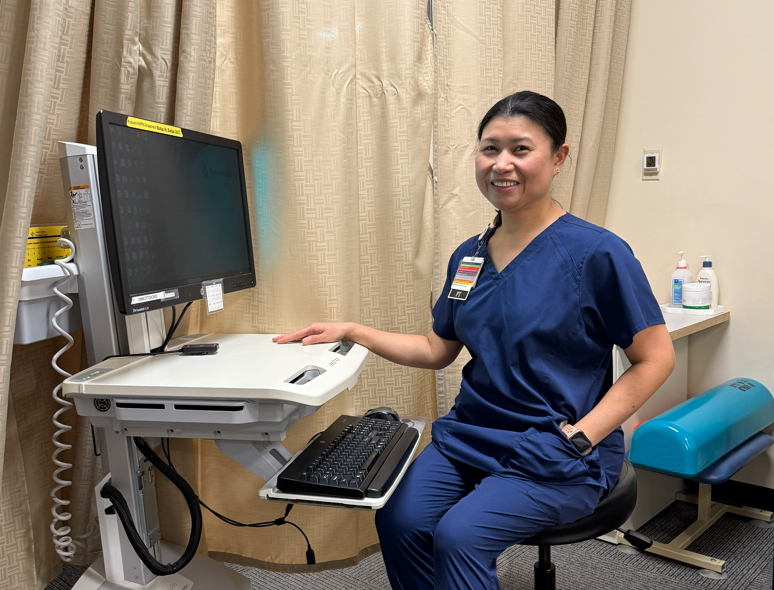Novel metric will enable providers nationwide to set ‘equity targets’ for at-risk populations as they work to close vaccine gaps
SACRAMENTO, Calif. – Northern California-based Sutter Health today announced the launch of its novel COVID-19 Vaccine Equity Index (CVEI), aimed at improving vaccine equity for the most vulnerable patient populations. The CVEI is also the subject of a peer-reviewed study, released today in the journal “Health Equity.” Sutter Health designed the tool to help counter the disproportionate impact of COVID-19 on communities of color. Created under Sutter’s recently launched Institute for Advancing Health Equity (IAHE), the CVEI represents another key step in Sutter’s ongoing commitment to eliminate health disparities both within its integrated system and across the United States.
Ample data demonstrate that racial and ethnic minorities have been disproportionately burdened by COVID-19 infection rates, hospitalizations and deaths – necessitating a more robust, focused vaccine outreach strategy to drive equitable health outcomes across patient populations. The new CVEI uses real-time, widely available electronic health record data to identify patient groups at increased risk and determines what additional proportion of an at-risk community needs vaccine protection to offset its disproportionate risk. For example, to achieve equity for Sutter’s total patient population, based on a goal of reaching 70 percent herd immunity, the CVEI set vaccination equity targets for the health system’s higher-risk patient populations. Using simulated data, that could lead to targets that look like this:
• 88% vaccination rate for Hispanic patients
• 82% vaccination rate for African American patients
• 71% vaccination rate for Asian patients

Kristen M.J. Azar, R.N. MSN/MPH
“Sutter Health has worked for over a decade to advance health equity through research and patient-centered solutions – including significant work to address disparities exacerbated by the COVID-19 pandemic,” said Kristen M.J. Azar, R.N. MSN/MPH, scientific medical director of the IAHE, and senior author on the CVEI publication. “The CVEI is a natural continuation of these efforts that enabled us to tailor our vaccination strategies and deploy resources where they are needed most. We know it can be of great value to other health systems, counties or state agencies as they work to do the same.”
As an integrated network that serves one of the most demographically and geographically diverse patient populations in the United States, Sutter is uniquely positioned to foster innovations in health equity. Using the resources and reach provided by its coordinated system, Sutter’s community health, research, population health and health equity teams – who collaborated to develop this novel metric – are also able to monitor and track the progress of their vaccine equity initiatives in real time.

Alice Pressman, Ph.D.
“The CVEI is another example of how Sutter has leaned into the benefits of our integrated network to create solutions that drive more equitable health outcomes well beyond our footprint,” said Alice Pressman, Ph.D., M.S., research director of the IAHE, and lead author on the CVEI publication. “The metric can also be used to improve equity in the treatment of other diseases, including hypertension control and cancer care, allowing us to continue to tailor our approach for numerous conditions and foster better health outcomes for all of the communities we serve.”
Insights provided by the CVEI are guiding Sutter’s implementation of targeted, meaningful strategies to close identified vaccine equity gaps and direct resources to patients most at risk of adverse health outcomes. By collaborating and coordinating with the system’s various health teams and leveraging partnerships with trusted community organizations, Sutter has implemented a series of rapid cycle pilots and programs, including:

Sutter Health partnered with Raizes Collective in Santa Rosa to vaccinate Latino community in May 2021.
• Deploying Mobile Vans and “Pop-Up Sites”: For vaccine distribution at trusted non-healthcare locations.
• Carving Out Dedicated Appointment Blocks: For community partners, community clinics and essential worker groups at Sutter-run mass vaccination sites.
• Conducting Targeted Outreach: Vulnerable Sutter patients were contacted by phone and text message and flagged in the system’s call center to encourage vaccination, combat vaccine hesitancy and help them navigate the process.
The index is one piece of the IAHE’s Vaccine Equity Committee, which was formed in early March when vaccines became more widely available. The Institute was formally established in December 2020 and embedded within Sutter’s integrated system. The IAHE produces high-impact research, like the CVEI, that can be directly applied to a variety of clinical settings and other public health efforts. With a strong track record of success measuring and advancing health equity, Sutter continues to demonstrate its commitment to eliminating health disparities in areas including maternal health, mental health, chronic illnesses and COVID-19, by engineering data-driven, innovative solutions.
The full CVEI study can be seen in the journal Health Equity: https://www.liebertpub.com/doi/10.1089/heq.2021.0047.
To find out more about Sutter Health’s work to advance health equity, please visit: https://vitals.sutterhealth.org/health-equity/.





